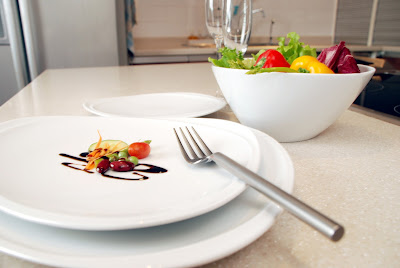Servingware is one of the most important decisions when you hold any food events for your restaurant or your hotel. Whether you are registering for a servingware set before a wedding, replacing your current servingware or restocking after a move, your decision will define something you will likely use every day for years. There are important aesthetic, financial and material decisions to make when choosing servingware. Read on to find out how to choose the right servingware.
 |
| Royal Porcelain (Thailand) |
Decide if you are looking for casual or formal servingware. Casual servingware is sturdy and designed for everyday use. Formal servingware is usually more delicate, made for holidays and entertaining.
Royal Porcelain (Thailand)
Define what other uses your servingware will have. For example, if you want to use it for outdoor use, you may want to look into less common but unbreakable materials, such as metal or laminate. If you will only use a formal set during the holidays, you may want to coordinate the colors for Christmas.
 |
| Dong Gia Ceramics (Vietnam) |
Evaluate your current servingware. Is it important that your new servingware matches your old material. If so, you will need to coordinate by material, color or pattern.
Choose your material. Servingware is commonly made with bone china, porcelain, stoneware, semi-porcelain, ironstone, cream ware, majolica and faience.
- Casual servingware should be made with a sturdy, dishwasher-safe and microwaveable material. It is most often made of stoneware or earthenware, such as cream ware, majolica, faience, and delft. These materials are less sturdy than bone china or porcelain, but they are inexpensive and easier to replace.
- Formal servingware is often made of bone china and porcelain. Porcelain is the hardest ceramic and is referred to as "white gold." Bone china is strong because it is fortified by ox-bone ash. Both types are expensive, and neither is ideal for dishwasher or microwave use, because they are harder to replace.
- Majolica and faience chip very easily. They are often brightly colored or hand painted. Full servingware sets are uncommon because of their fragility. Serving platters or plates should be used with care.
 |
| Bernardaud (France) |
Choose your color scheme. Plain white servingware is still very popular, because it is dishwasher safe, it doesn't fade, it is easy to replace, it matches most decor and it showcases food well. However, you can also coordinate with your dining room or kitchen by picking a color.
If you have a brightly colored dining room, neutral colors will compliment it well. If you have neutral colored décor, you can incorporate a bright color into your dishes that will bring out other aesthetic accents.
 |
| Legle (France) |
Decide if you want to incorporate patterns into your dishware. A general guideline is to include a plain part of servingware with your patterns, so that they are not overwhelming.
Many patterns are created with decals or transfers and should be hand washed to prevent fading or removal. Gold or metal lined patterns should not be used in the microwave.
 |
| Legle (France) |
Choose shape and texture. A way to spice up a plain dishware collection is to buy complimentary bowls or plates in a different shape or texture. Both plates and bowls are made in ovals, squares and more.
 |
| Dong Gia Ceramics (Vietnam) |
Consider mixing and matching your set. Many people are stepping away from having plates, bowls and servingware with the same patterns or colors. You can mix and match different colors, patterns, textures and shapes.
 |
| HEPP (Germany) |
Decide how many settings you need. A good rule is to buy as many sets as people you can imagine hosting comfortably for dinner. If you are on a budget, buy enough for the family and add to your collection later.
VIETSOLUTIONS is proud of being Exclusive/Official Distributor of Royal Porcelain, Dong Gia, Bernardaud, HEPP, Legle and Representative of international standard brands in Vietnam.
Source: wikihow
Image: VIETSOLUTIONS



Không có nhận xét nào:
Đăng nhận xét